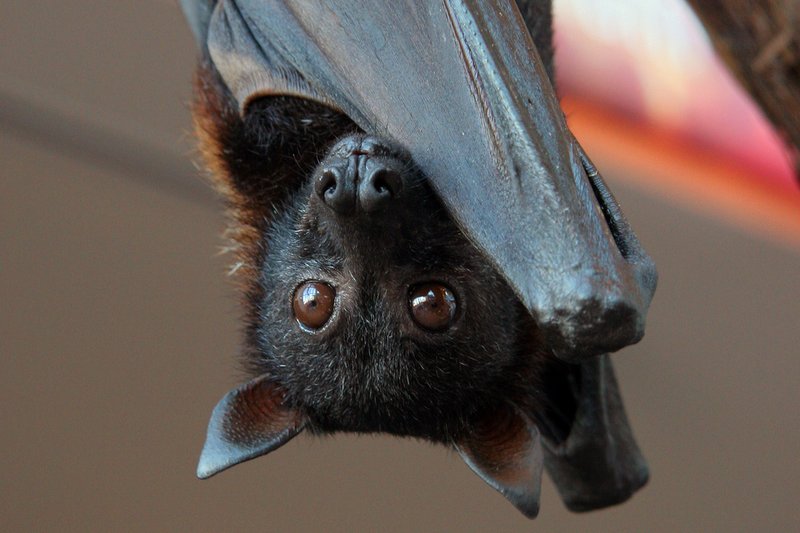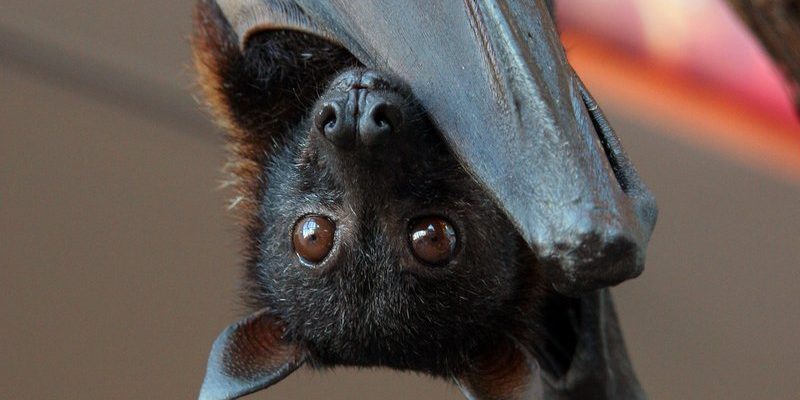
You might be surprised to learn that the flying fox is not actually a fox at all! Instead, these creatures are large fruit bats belonging to the Pteropodidae family. Considered the world’s largest bats, flying foxes have impressive wingspans that can stretch up to six feet! With their cute, fox-like faces and gentle demeanor, they’re quite different from your typical bat stereotype.
Flying foxes are found predominantly in tropical and subtropical regions of Africa, Asia, Australia, and several islands in the Pacific. They play a vital role in their ecosystems by pollinating flowers and dispersing seeds. Imagine a world without these marvelous creatures; many plants rely on them for reproduction. It’s fascinating to think how interconnected our environment is!
As we dive deeper into the world of flying foxes, you’ll discover their unique features, social behaviors, and more. Keep reading, and you might find yourself enamored by these charming nocturnal animals!
Physical Characteristics
Size and Appearance
Flying foxes are indeed impressive in both size and appearance. They can weigh anywhere from 1 to 3.5 kilograms (2.2 to 7.7 pounds), depending on the species. What sets them apart is their large, rounded heads and fluffy fur that often varies in color from brown to gray or even orange. Their long wings are designed for gliding, allowing them to soar gracefully over their habitats.
Their large eyes give them excellent night vision, which is essential for their nocturnal lifestyle. Unlike other bats that use echolocation, flying foxes rely on their keen eyesight and sense of smell to find food—primarily ripe fruits and nectar. This distinction makes them somewhat unique among bat species.
Here’s a fun fact: flying foxes can reach wingspans of up to 1.8 meters (6 feet). They look like a small dog when perched! Despite their size, they are remarkably agile and can cover extensive distances, sometimes flying up to 50 kilometers (31 miles) in a night to forage for food.
Habitat
Flying foxes prefer to roost in large colonies, often found in dense forests, mangroves, and urban areas. These social creatures pack together in trees during the day, forming what’s known as a “camp.” You can imagine how lively these camps can be with thousands of these bats hanging around!
They thrive in warm climates and are highly adaptable. In some regions, flying foxes have begun to venture into urban areas, where they find fruit trees in gardens and parks. While some might see this as a nuisance, it’s crucial to understand that they are seeking food in their natural hunt for sustenance.
However, habitat loss due to deforestation and urbanization poses significant threats to their populations. As natural roosting sites diminish, flying foxes are increasingly vulnerable. Protecting these habitats is essential to ensure their survival and the health of our ecosystems.
Diet and Feeding Habits
The Fruit Lovers
Flying foxes dine mainly on fruits, nectar, and flowers, making them vital for the health of many trees and plants. They have a wide diet, which includes bananas, mangoes, guavas, and even flowering shrubs. Their long snouts and tongues are perfectly adapted for reaching into flowers to sip nectar.
What’s fascinating about flying foxes is their feeding behavior. They often feed in groups, sharing a tree while they banquet on their favorite foods. This is not just a mealtime ritual but also a social event, allowing them to bond and communicate.
As they consume fruit, flying foxes help with seed dispersal, which is essential for many plant species. When they eat fruit, the seeds pass through their digestive systems unharmed and are often dropped miles away, giving rise to new plants. It’s an ecological win-win situation!
Reproduction and Life Cycle
Flying foxes typically mate once a year, with females giving birth to a single pup after a gestation period of about six months. This brings to light a heartwarming aspect of their life cycle: the mother-baby bond. After birth, the mother carries her pup for several weeks, nursing it and teaching it to feed.
During the early stages, the pups cling tightly to their mothers while she flies, which is quite a sight to see. As they grow, young flying foxes learn how to navigate and forage for themselves, gradually gaining independence. This nurturing environment ensures that the next generation is well-equipped to thrive in the wild.
It’s worth noting that flying foxes can live up to 15 years in the wild, but many face challenges that can shorten their lifespan. Understanding their reproductive habits is vital for conservation efforts, especially as their numbers dwindle in certain regions.
Conservation Status
Threats to Flying Foxes
Many species of flying foxes are currently facing threats that put their survival at risk. Habitat destruction is one of the primary concerns, as forests are cut down for agriculture and urban development. This loss of habitat leads to reduced food sources and nesting sites for these creatures.
Another significant threat comes from hunting and culling, often driven by local perceptions of flying foxes as pests due to their feeding habits. In some areas, they’re hunted for food or killed in attempts to protect fruit crops. Understanding these threats is crucial, as flying foxes play an important role in maintaining the health of ecosystems.
Climate change also poses challenges, affecting the availability of food sources and altering their habitats. As temperatures rise, plants may not produce flowers and fruits at the same times, disrupting the feeding patterns of these magnificent creatures.
Conservation Efforts
Conservation efforts are underway to protect flying fox populations and their habitats. Various organizations are working to establish protected areas, ensuring these bats have safe and healthy environments. Education plays a critical role in these initiatives; by raising awareness about the ecological importance of flying foxes, we can help shift perceptions from pests to valuable members of our ecosystem.
Additionally, there are breeding programs aimed at increasing populations in areas where flying foxes are critically endangered. These programs focus on ensuring genetic diversity, allowing populations to be more resilient to changes in the environment.
It’s essential to get involved at a local level too! Whether it’s supporting wildlife protection laws or helping to plant trees, every little action can contribute to the conservation of these fascinating creatures.
Fun Facts About Flying Foxes
- Flying foxes can smell fruits from over a mile away. Their keen sense of smell is vital for locating ripe food.
- They have been known to travel up to 50 km (31 miles) in one night searching for food!
- Some species of flying foxes are monogamous, forming lifelong partnerships.
- Unlike most bats, flying foxes do not use echolocation to navigate; they rely on their eyesight and sense of smell instead.
- These bats can consume up to 8 ounces of fruit in one night.
FAQ
Where can I find flying foxes in the wild?
Flying foxes are primarily found in tropical and subtropical regions, including parts of Africa, Asia, Australia, and various Pacific islands. They often inhabit dense forests and urban areas where fruit trees are abundant. If you’re looking to spot them, visiting a national park or a nature reserve in these regions during their active hours at dusk can increase your chances!
Are flying foxes dangerous to humans?
No, flying foxes are generally not dangerous to humans. In fact, they are quite shy and will avoid contact with people. They pose no threat but may carry diseases, which is why it’s crucial to avoid handling them or disturbing their habitats. Observing them from a distance is the best way to appreciate their beauty and role in the ecosystem.
How do flying foxes communicate?
Flying foxes use a variety of vocalizations to communicate with each other, especially during social interactions in their colonies. They produce sounds that can range from clicks and squeaks to growls and screams, helping them convey different messages. Additionally, body language plays a significant role in their communication, especially during mating rituals and mother-pup interactions.
What do flying foxes eat?
Flying foxes are primarily frugivorous, meaning they mainly eat fruits, nectar, and flowers. Their diet consists of a variety of fruits, including bananas, mangoes, and guavas. They play a vital role in ecosystems by pollinating flowers and dispersing seeds as they forage for food, helping many plant species reproduce.
How can I help protect flying foxes?
Protecting flying foxes starts with raising awareness about their ecological importance. Support local conservation initiatives, participate in tree-planting events, and advocate for the preservation of natural habitats. Additionally, consider educating others about the value of these creatures and the threats they face. Even small actions can make a significant difference in their survival.
How long do flying foxes live?
Flying foxes have relatively long lifespans for bats, typically living up to 15 years in the wild. However, this can vary depending on species and environmental factors. Unfortunately, many flying foxes face threats that can shorten their lives, so conservation efforts play a critical role in increasing their chances of survival.
Do all species of flying foxes look the same?
No, there are several species of flying foxes, and they can vary significantly in size, appearance, and color. Some species have distinctive fur colors, while others may have varying wing spans. However, all flying foxes share common traits, such as large eyes and a fruit-based diet, which unify them within this fascinating family of bats.
Can flying foxes be kept as pets?
Keeping flying foxes as pets is not advisable. They are wild animals with specific habitat and dietary needs that are challenging to meet in a home setting. Additionally, keeping them as pets can lead to stress for the animal and legal issues, as many regions have regulations against keeping wild bats. Observing them in their natural habitat is the best way to appreciate their beauty.
How do flying foxes contribute to our ecosystem?
Flying foxes play an essential role in their ecosystems as pollinators and seed dispersers. As they feed on fruits and nectar, they help plants reproduce by spreading seeds over vast distances. This creates new growth and maintains the health of forests, making flying foxes vital to the overall balance of their environments.
What is the best time to observe flying foxes?
The best time to observe flying foxes is at dusk when they become active. During this time, you can witness them flying out from their roosting sites to forage for food. If you’re in a suitable habitat, stand quietly at a distance, and you might just catch a glimpse of these majestic creatures soaring through the night sky!
Why are flying foxes important for agriculture?
Flying foxes play a crucial role in agriculture by pollinating a variety of flowering plants and dispersing seeds for fruit trees. Their feeding habits help maintain healthy populations of these plants, which can ultimately benefit agricultural productivity. Farmers who recognize this contribution may find it worthwhile to coexist peacefully with these creatures rather than view them as pests.

